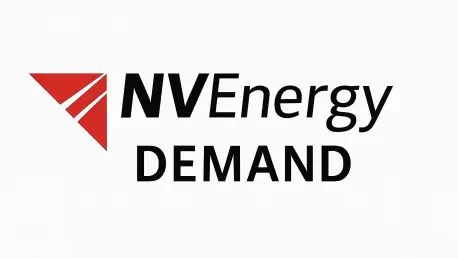In a move that has stirred considerable debate across the state, the Public Utilities Commission of Nevada (PUC) recently made a unanimous decision to greenlight significant alterations to NV Energy’s billing structure, impacting both residential and small business customers. This ruling, finalized on a Tuesday, introduces a daily demand charge set to begin in April 2026 and revises the net metering program, raising alarms among consumer advocates and solar energy proponents. Concerns center on the potential financial strain on households and the broader implications for Nevada’s ambitious clean energy goals. As the state grapples with balancing utility costs and sustainable energy adoption, this decision marks a critical juncture in the ongoing dialogue about affordability and fairness in the energy sector. The changes promise to reshape how energy costs are calculated and compensated, prompting a closer examination of their effects on diverse stakeholders.
Understanding the New Billing Structure
Impacts of the Daily Demand Charge
The cornerstone of the recent regulatory decision is the introduction of a daily demand charge, which will be determined by a customer’s peak energy usage during a specific 15-minute window each day. NV Energy, the state’s leading utility provider, argues that this approach allows customers to better manage their consumption patterns, ultimately fostering a more efficient energy grid without raising overall costs. The utility projects that the average monthly bill will increase by approximately $20, offset by other adjustments to maintain cost neutrality. However, this restructuring has sparked skepticism among consumer groups who fear it may disproportionately burden those with higher usage. Advanced Energy United (AEU) has highlighted potential increases of up to $27 for customers using 5 kWh and $38 for those at 6 kWh, suggesting that the charge could worsen existing challenges in energy affordability. This discrepancy between projections and potential outcomes underscores the uncertainty surrounding the true impact on ratepayers.
Critics of the daily demand charge argue that it may inadvertently discourage energy conservation rather than promote it. Sheila Hallstrom from AEU has voiced concerns that the structure penalizes customers for brief spikes in usage, rather than rewarding consistent efficiency. Such a system could hit hardest for households with unpredictable energy needs, such as those reliant on medical equipment or with varying daily schedules. The fear is that instead of empowering consumers to make smarter energy choices, the charge might add an unforeseen layer of complexity and cost. With implementation delayed until April 2026, NV Energy has committed to a robust customer education campaign to help mitigate confusion. Yet, questions remain about whether these efforts will adequately prepare customers for the shift or if the financial implications will outweigh the promised benefits of grid efficiency. The debate continues as stakeholders await clearer data on how these charges will play out in real-world scenarios.
Broader Implications for Energy Costs
Beyond the immediate effects of the demand charge, there lies a deeper tension between utility cost recovery and maintaining affordability for Nevada’s residents. The PUC’s decision aims to ensure that customers bear the true cost of the services they receive, as emphasized by Commissioner Tammy Cordova during the hearing. However, achieving this balance is contentious, with many questioning if the new structure genuinely aligns with equitable cost distribution. NV Energy maintains that its rates remain competitive, pointing out that Nevada’s average residential retail price through mid-year was significantly lower than California’s by 60% and below the national average by 22%. Despite these assurances, public opposition at the PUC hearing was palpable, with numerous individuals and organizations expressing worries about heightened financial pressures on already strained budgets.
The broader economic context adds another layer of complexity to this regulatory shift. For vulnerable households grappling with rising living costs, any additional charge, even if offset elsewhere, can feel like a significant burden. Critics argue that the focus on peak usage fails to account for socioeconomic disparities among customers, potentially widening the gap between those who can adapt their usage and those who cannot. Meanwhile, NV Energy’s assertion that most customers will experience lower bills due to an overall rate design adjustment—slashing over a third of an initial $224 million rate request—offers some hope, though the specifics of individual bill impacts remain unclear. As the state moves toward implementation, the challenge will be ensuring that cost recovery does not come at the expense of fairness, particularly for those least equipped to absorb additional expenses. This ongoing discussion highlights the intricate balance between policy, economics, and social equity in energy regulation.
Revising the Net Metering Framework
Challenges with the 15-Minute Netting Interval
A significant overhaul of NV Energy’s net metering program, particularly in the northern service territory, forms another critical aspect of the PUC’s recent ruling. Under the new system, credits for excess energy returned to the grid will be calculated every 15 minutes rather than on a monthly basis, a change that solar advocates argue introduces unnecessary complexity. Voices from organizations like the Sierra Club’s Toiyabe Chapter and Vote Solar, represented by Janet Carter and Chauntille Roberts respectively, have raised alarms over diminished billing transparency. They contend that this granular interval makes it challenging for customers to verify their charges accurately, potentially eroding trust in the system. Moreover, there is a concern that this adjustment contradicts the spirit of Senate Bill 405, enacted to safeguard solar customers and ensure fair compensation for their contributions to the grid.
Adding to the critique, the Clark County Department of Environment and Sustainability (DES) submitted a letter to the PUC outlining how the 15-minute netting interval effectively undermines true energy netting. The DES argues that this shift not only violates state statutes but could also slash annual compensation for solar customers by as much as $136, creating a disincentive for adopting renewable energy solutions. Such financial repercussions are particularly troubling in a state striving to meet aggressive clean energy targets. The fear among environmental advocates is that these changes could slow the momentum of rooftop solar adoption, a key pillar of Nevada’s climate strategy as outlined in Clark County’s climate plan. As the implementation date approaches, the lack of clarity on how customers will navigate this new billing framework continues to fuel apprehension among those invested in sustainable energy progress.
Balancing Renewable Goals and Utility Policies
The net metering revisions also spotlight a growing divide between utility-driven policies and the priorities of consumer and environmental advocates. While NV Energy and regulators assert that the 15-minute interval offers a more precise method for calculating credits, reflecting real-time grid contributions, critics see it as a step backward for renewable energy incentives. The concern is that by reducing the financial benefits of solar energy, the policy might deter potential adopters at a time when Nevada is pushing to expand its clean energy footprint. This tension illustrates the broader challenge of aligning utility revenue needs with the state’s environmental ambitions, a balance that remains elusive as public and private interests clash over the best path forward.
Looking at the bigger picture, the net metering changes are emblematic of a systemic struggle to integrate renewable energy into traditional utility models without sacrificing affordability or fairness. The PUC’s decision, while rooted in a desire for accurate cost allocation, risks alienating a significant portion of the population that views solar energy as both an economic and environmental solution. As Nevada moves toward the rollout of these changes, the planned customer education initiatives will be crucial in bridging the gap between policy intent and public perception. Yet, the long-term impact on solar adoption rates and the state’s clean energy trajectory remains uncertain. The discourse surrounding this issue serves as a reminder of the intricate interplay between innovation, regulation, and societal goals in shaping the future of energy in the region.
Reflecting on a Pivotal Energy Decision
Lessons from Regulatory Outcomes
Looking back, the PUC’s approval of NV Energy’s demand charge and net metering adjustments stirred robust debate over their ramifications for household budgets and Nevada’s renewable energy landscape. The contention centered on whether the changes truly balanced utility needs with customer protections, as regulators and NV Energy maintained that the restructured rates were both fair and cost-effective compared to regional and national benchmarks. Critics, however, pointed to the potential burdens on ratepayers and the setbacks to clean energy adoption as evidence of a misstep. The decision-making process revealed the deep complexities of energy policy, where economic, environmental, and social considerations often collide.
Moving Toward Equitable Solutions
Reflecting on the past, it became clear that addressing the fallout from such regulatory shifts demanded proactive measures. A key step forward involved enhancing transparency through detailed billing explanations and accessible resources to help customers adapt to the new demand charge system. Additionally, revisiting net metering policies to ensure they supported rather than hindered solar growth was seen as vital. Collaborative efforts between utilities, regulators, and advocacy groups emerged as essential to crafting solutions that prioritized both affordability and sustainability. These steps, initiated after the ruling, aimed to pave the way for a more inclusive energy future in Nevada, addressing the concerns that surfaced during the heated public discussions.









